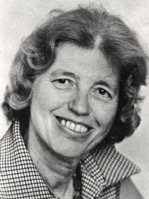
Assigned by the Department of Justice to interpret for and watch Norwegian priests visiting political prisoners, Zassenhaus instead began smuggling food, medicine, and writing materials to the prisoners, protected by the belief of the prison authorities that given her position, she was also informing the Gestapo. At the end of the war, the prisoners were moved to various prisons all over Germany; Zassenhaus created her own records to track some 1,200 Scandinavian prisoners in 52 prisons across Germany. Her records, passed to the Red Cross after Zassenhaus learned that all political prisoners were to be killed on “Day X”, helped save the lives of these prisoners who were evacuated to Scandinavia in 1945.
In 1947 Zassenhaus was smuggled into Denmark in a fish truck even though Germans were prohibited from entering the country. The Danish parliament later legitimized her immigration. She continued her medical studies at the University of Bergen, and graduated as a physician from the University of Copenhagen. She emigrated to Baltimore in 1952, where she completed her internship and residency at City Hospital and opened her medical office in 1954, practicing as a physician thereafter.
Zassenhaus is the only German decorated with the Royal Norwegian Order of St. Olav (1963) for her activities during World War II. She also received the Medal of Honor from the Norwegian and Danish Red Crosses (1948), the Danish Order of the Dannebrog (1964), the German Bundesverdienstkreuz (1969), and the British Cross of the Order of Merit. In 1974, she was nominated for the Nobel Peace Prize by two members of the Norwegian Parliament who had been prisoners of war in Nazi Germany.
Zassenhaus wrote about her experiences during the war in a memoir, Walls, published in English in 1974.
Click on the cover for details about the eBook:




